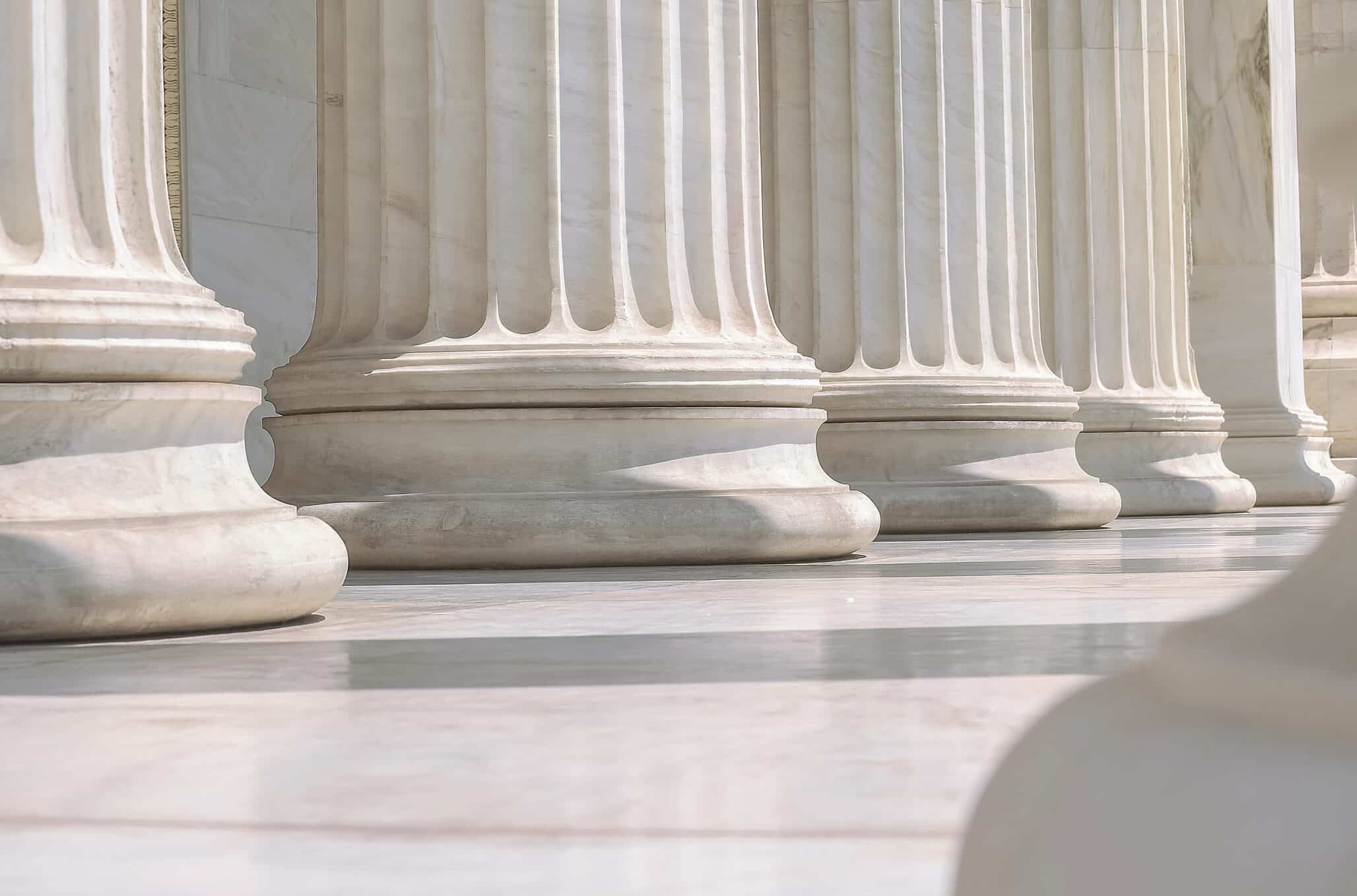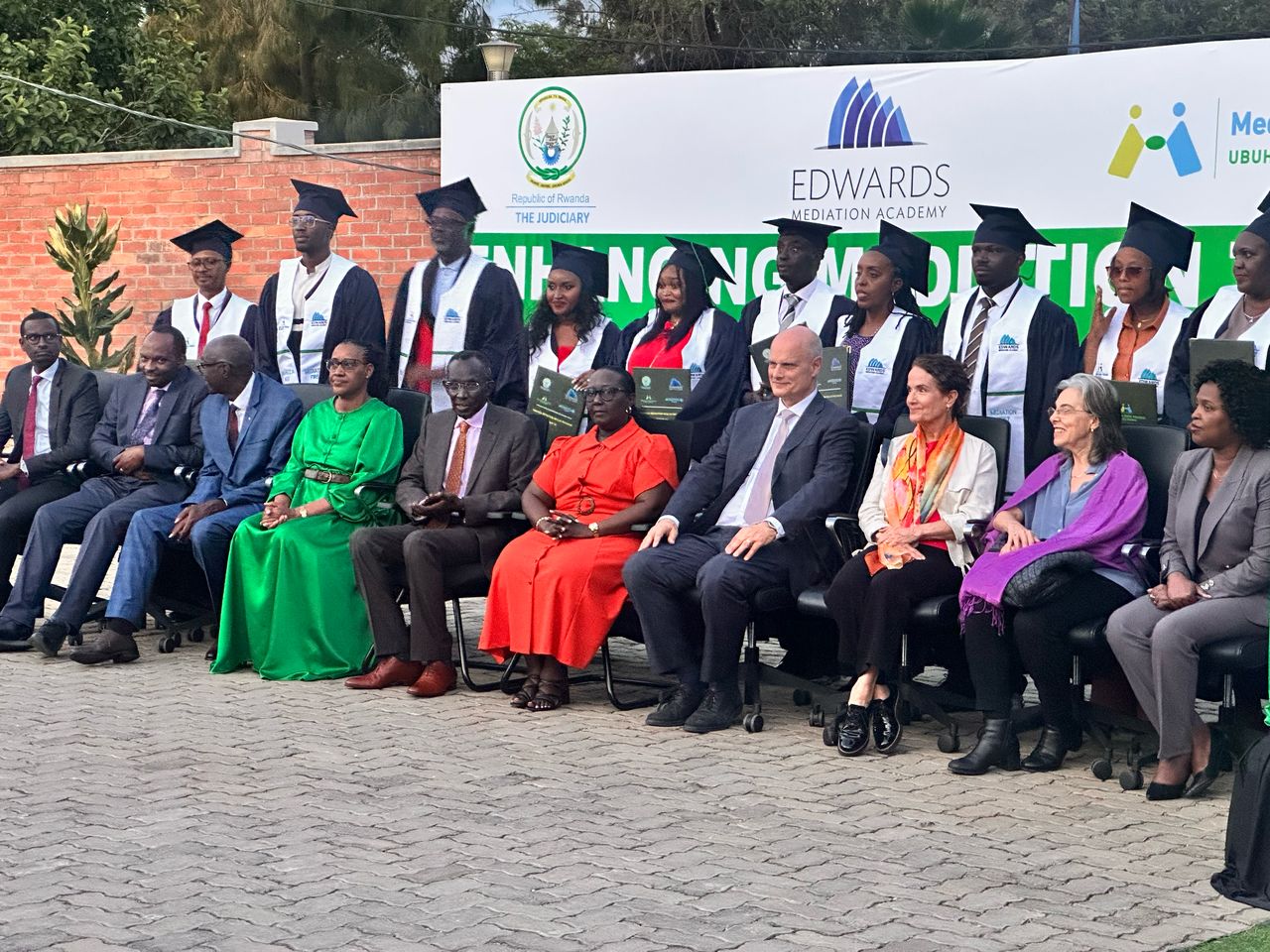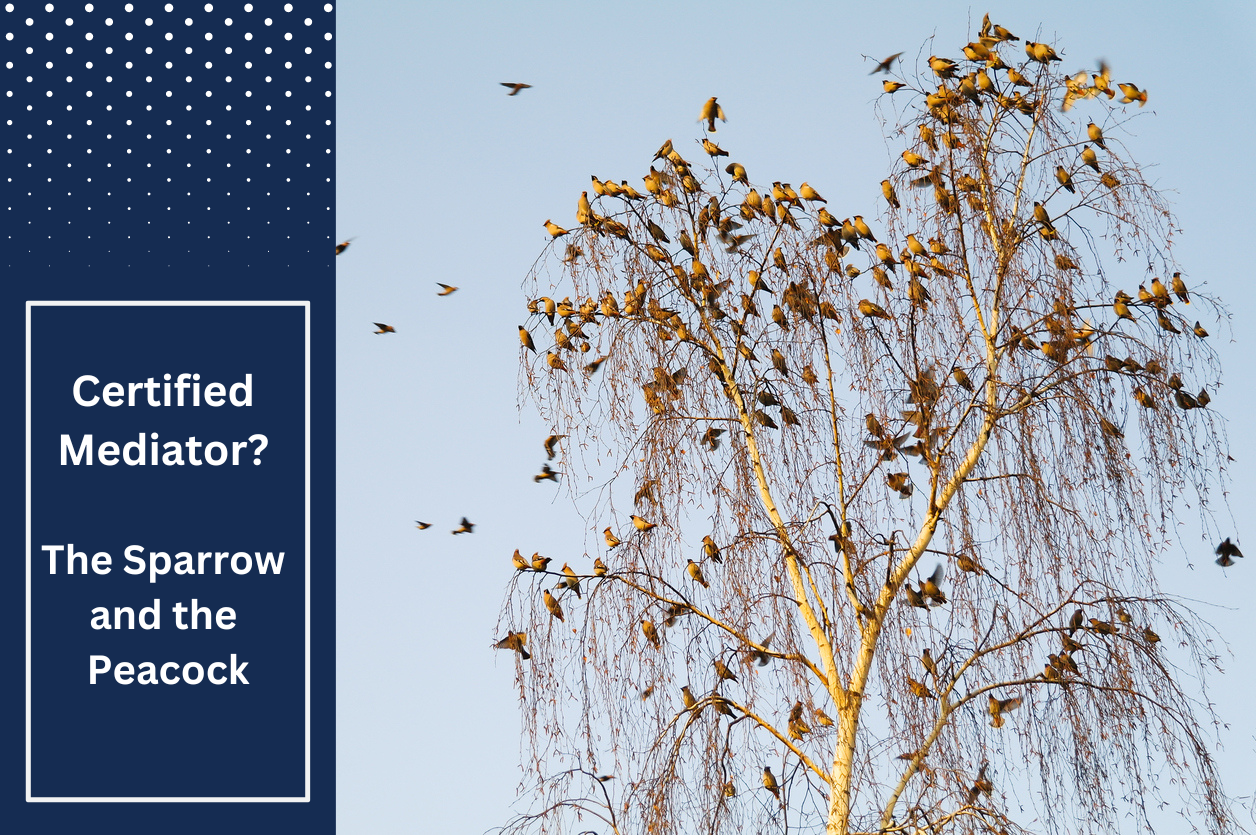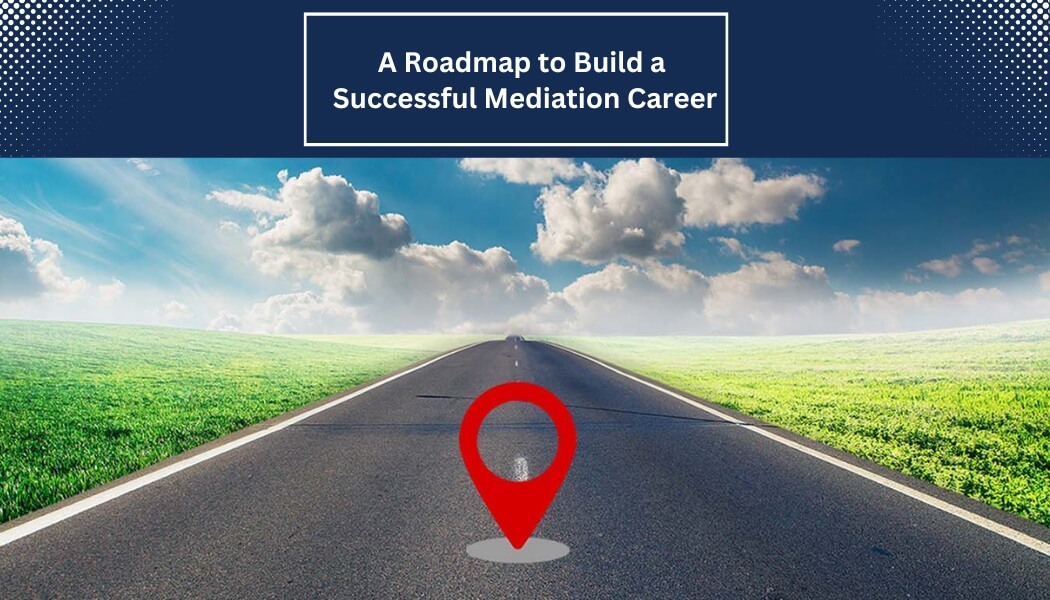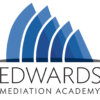We received some great questions from attendees during our recent webinar with Bruce and Howard Herman (JAMS mediator and expert on court ADR programs), many of which we did not have time to address live. So we thought we’d let both Bruce and Howard weigh in on your questions in writing as an educational opportunity for anybody interested in the topic of Court ADR programs. Watch the full webinar on YouTube to hear more from Howard on his experience, plus more attendee Q&A that took place live during the event.
Q. Great event. Thank you for organizing this, Bruce and Howard. Apart from surveys, could you share some thoughts on your strategies to quality control the mediation services in online platforms (particularly when external mediators are engaged)? When mediation is in-person you can audit 1-2 sessions but in online mediations that could be controversial if an observer is present in Zoom or other platforms.
Howards response: Just like with an in-person mediation, one needs to clear the observation with the participants and ensure that they understand the observer will simply fade into the background, play no role in the mediation itself, and will be bound to the same confidentiality as the mediator. When auditing a session in Zoom, the observer should turn off both video and audio, so that the observer does not appear to be so present in the session. While not ideal, I’m not sure observing over Zoom is significantly more intrusive that observing in person. In addition, and again similar to in-person mediation, follow-up questionnaires can be sent to the participants in on-line mediation. And overall, the best means of quality control relates back to the initial and ongoing training and certification of panelists, which helps to minimize problems.
Bruce’s response: I’m not a huge fan of in person auditing as I think it is potentially disruptive to both participants and the mediator. There are enough challenging moments in the mediation process for the mediator without having to be second guessed or micro managed by an observer. And as we know, there are numerous approaches to any given moment in mediation and defending decisions moment to moment is an unwarranted intrusion on mediator discretion. I also think that participants are aware of the third party presence and, depending on the circumstances, might be inhibited in their communication.
That said, I think the best efforts toward quality control begin with effective training and role playing. I also think that post mediation reflective groups to discuss difficult moments assist the mediator, and others in the group, in thinking through effective strategies and improving skills. Finally, detailed surveys and follow up with participants will also provide quality feedback for consideration and discussion. Over time, at least in the commercial setting, mediator reputation will ultimately separate those highly skilled mediators from the rest of the pack.
Q. Can you please comment on the following statement? “Better mediators do not have significantly higher settlement rates – but they do have significantly happier participants in mediation” https://adrr.com/adr3/other.htm#3a
Howards response: I’m not sure where the data on which this comment is based comes from, or if it is just one lawyer’s subjective experience. Nonetheless, it points us to the question of how one defines “success” in mediation. While settlement certainly matters, I agree that participant satisfaction is a more important measure.
Q. Both to Howard and Bruce: There is some statistics provided by the US Department of Justice that states that in the years of 2016-2017 Voluntary ADR Proceedings were 75% successful and Court-Ordered Proceedings were only 55% successful. What is your opinion on these stats? https://www.justice.gov/archives/olp/alternative-dispute-resolution-department-justice
Howard’s Response: These statistics report cases in which the U.S. Department of Justice was a party, and the mediation was conducted by a private mediator. It is not at all surprising that the cases in which the parties voluntarily chose mediation settled at a higher rate than those in which the parties were ordered to mediate. It is notable that such a high percentage of court ordered cases are resolved. I do have questions about how DOJ determined which cases were voluntary and which were court ordered, and I wonder what the data would look like if it included cases in which the mediation was conducted by a court staff member or court-appointed volunteer, and if judicial settlement conferences were included.
Bruce’s Response: I agree with Howard that it’s not surprising that court mandated processes report a lower success rate than voluntary mediation. What is noteworthy is the significant success rate of court mandated mediation. Anytime you can introduce a process that effectively cuts in half the number of pending cases, most court administrators and supervising judges should jump at the chance to include in their programming.
Q. What are the components of a documentation system? I hear good stories from trained mediators with a beginning practice but because things are not documented, other persons who are not connected with all our trainees may think that nothing is happening. How can we proceed to capture these small beginnings and build on?
Howard’s Response: Periodic reports about the program’s activities should be prepared and published on the court’s website. These materials should include statistics about how many cases are being referred and resolved, and satisfaction rates based on follow-up with the participants. To accomplish this, someone involved with the administration of the program must be charged with keeping track of each case referred to, following it to conclusion. It is useful to track case types as well, so that you can see if there are differences among different case types. And if possible, documenting the time savings and the monetary savings is useful. In addition to official reports, short articles about the program can be written and distributed through bar association journals and any other possible sources to get the word out to lawyers and other interested parties – perhaps business association publications as well. While respecting confidentiality, or with the permission of the parties, including stories about specific successes is particularly helpful. Especially in the early stages, speaking at bar association and business association events also helps to get the word out about the program.
Q. Speaking of Brazilian environment where the evaluative mediation is quite unknown and under-practiced compared to other styles, what kind of approach could you suggest for us to promote it among our community?
Howard’s Response: I reject the distinction between evaluative and facilitative mediation and see those terms as unhelpful. In my view, the definition of mediation is “a facilitated negotiation process.” All mediation is facilitative. The question is how the mediator goes about facilitating – how directive is the mediator or how elicitive. Also in my view, all mediation (at least of litigated or potentially litigated matters) has an evaluative component because the parties are considering how litigating the case compares with any possible negotiated resolution. The question is how the mediator goes about assisting the parties with that analysis. Understanding the evaluative/facilitative dichotomy in this way may help to move the legal culture toward a broader acceptance of the need for both highly developed facilitative and evaluative skills.
Q. How do you overcome the impression that you are so closely connected to the court that you might report directly to a judge?
Howard’s Response: Having strong rules and procedures in place that make clear that the mediator may not speak with the judge has been very helpful for court programs in the U.S. It also is important to have a system in place for handling problems that might arise in mediation without taking them to the assigned judge. For example, the rules of the Northern District of California provide for a specially assigned judge to hear motions for sanctions or to address other problems arising in a court mediation so that the parties do not bring these issues to the judge hearing the case. Developing a reputation for being willing to say no to a judge when asked for information that is confidential also has been helpful.
Q.Are court annexed mediations more successful than pre litigation ones? If yes, why?
Howard’s Response: I don’t know of any research that has been done to try to answer this question.
Finally, Howard promised a list of resources, which is below. This document is pulled from materials he uses in a course he teaches, International Court ADR Institute on Envisioning, Designing, and Implementation of Court ADR. This intensive program is offered every year or two by the Center on Negotiation and Dispute Resolution at UC Law San Francisco. If you are interested in finding out more, contact UC Law San Francisco.
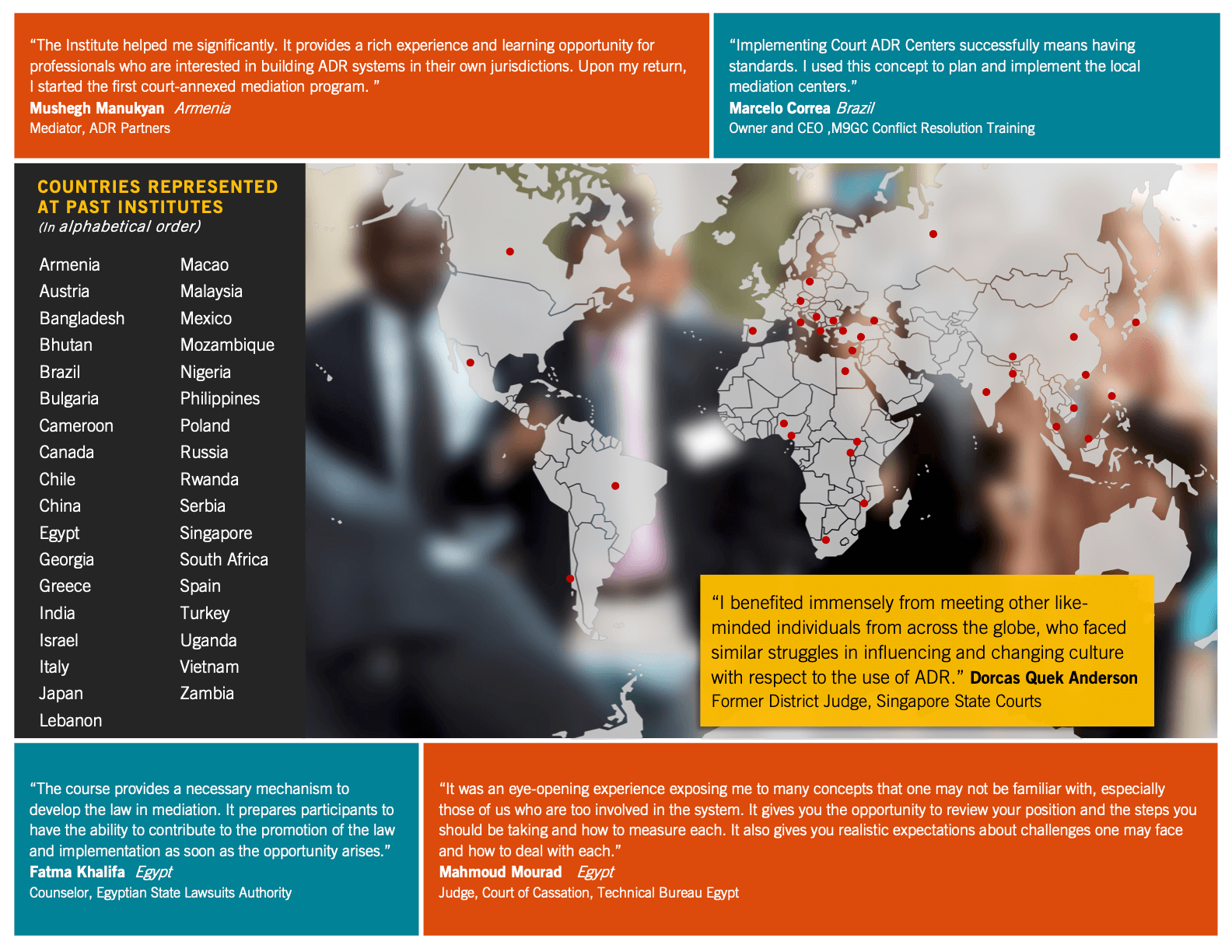
INTERNATIONAL COURT ADR INSTITUTE
Envisioning, Designing and Implementing Court ADR Resource List
- San Mateo County Superior Court ADR Programs
- U.S. District Court, Northern District of California, ADR Program
- S. Court of Appeals for the Ninth Circuit Mediation Program
- Court ADR Research Library – Resolution Systems Institute
- Model Standards of Conduct for Mediators
- Uniform Mediation Act
- Principles for ADR Provider Organizations, CPR-Georgetown Commission
- California Evidence Code
- California Rules of Court – Mediation Program Rules
- Evaluation of California Early Mediation Pilot Programs – Executive Summary
- Maryland Judiciary Statewide Evaluation of ADR,
- American Bar Association Section of Dispute Resolution
- Association for Conflict Resolution
- Mediate.com
- Unicitral Working Group on the Enforcement of Settlement Agreements
